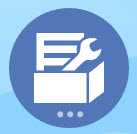Converting a Standard or Reporting Application to an Enterprise Application
Learn about converting an application in this topic.
- If you purchased Oracle Fusion Cloud EPM after June 4, 2019, see New Cloud EPM Services in Getting Started Guide for Administrators to learn about migrating an application to the new services.
- If you purchased Cloud EPM before June 4, 2019, you can convert a Standard or Reporting application to an Enterprise application.
To convert a Standard or Reporting application:
-
Review the conversion considerations. See Conversion Considerations.
-
Back up the Standard or Reporting application.
- Open the application, and then click Application
 , and then Overview
, and then Overview  .
.
- Click Actions, then Convert to Enterprise, and then Continue to proceed. A message lets you know if the application is converted to Enterprise. If successful, log off.
The application type is changed to "Enterprise", which includes options to enable and configure the Planning modules, and enables Groovy scripting. Metadata and data isn't changed during the conversion.
-
Log on and enable features that you need.
These validations are performed when you enable features:
- There can't be a member that already exists with the same name as any of the custom and base dimensions you specify in Map/Rename Dimensions. For example, if you create a custom dimension called Market in Financials, there can't be a member called Market in any other dimension.
- There can't be a member with the name
NO_<<customDimension>>,Total_<Dimension>>,All_<<Dimension>>, where<<Dimension>>is the actual dimension name you specified. For example, if you renamePlan Elementin Financials toElementfor a custom dimension, there can't beNo Element,Total Element. This is specific to modules that depend on any non-prefixed member. - The data storage for the Period and Account dimensions must be set to Never Share.
- The Year dimension name must be Years.
- 18 alias tables are predefined. The maximum supported is 32 (1 used internally). The conversion process attempts to merge the predefined alias tables with the alias tables in the existing application; if the count goes above 30, you get a validation error.
- The conversion process calculates the number of existing dimensions in the application and the number of new dimensions that would be created if the module is initialized. If resulting sum of both is greater than 32 (the maximum allowed), you'll see a validation error.
- For Projects, the name you specify for Program (a custom dimension option) shouldn’t already exist as a non-attribute dimension.
- For Workforce, none of the version members can be Label only.
- Recreate any user defined navigation flows.
When you convert an on-premises Oracle Hyperion Planning R11.1.2.1 (supported version) application to Planning using Migration, the same rules above apply.